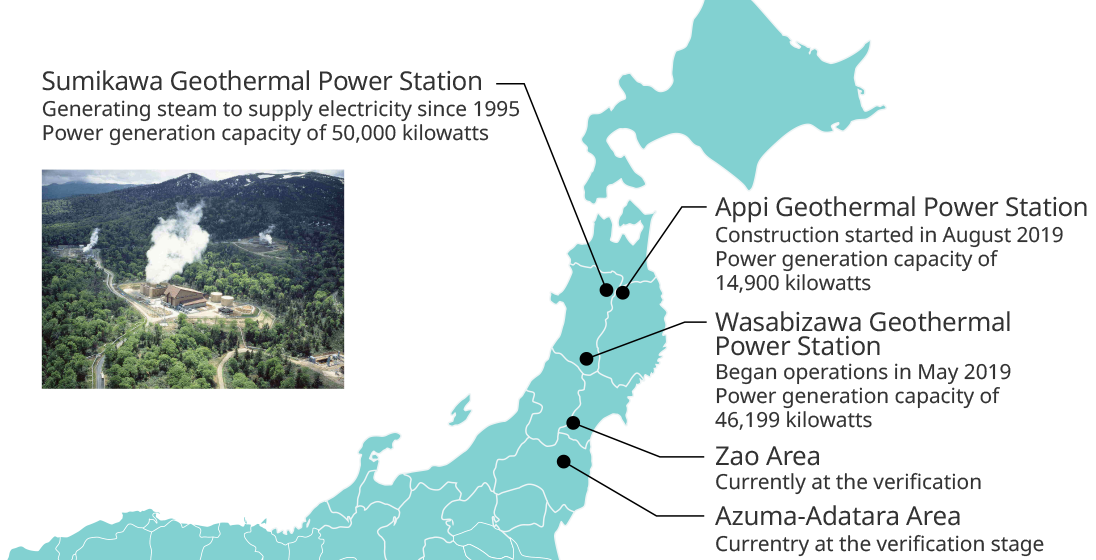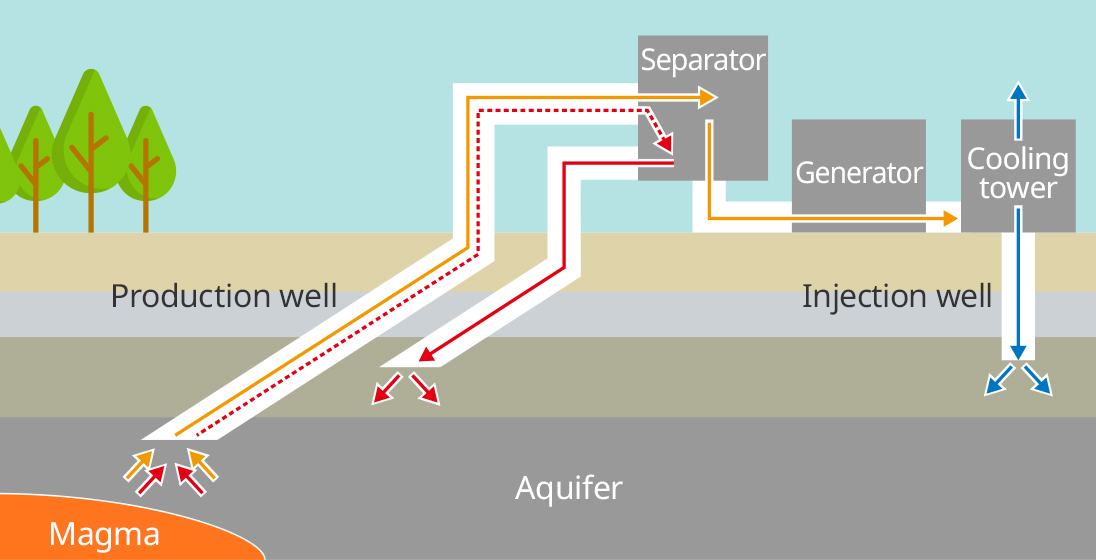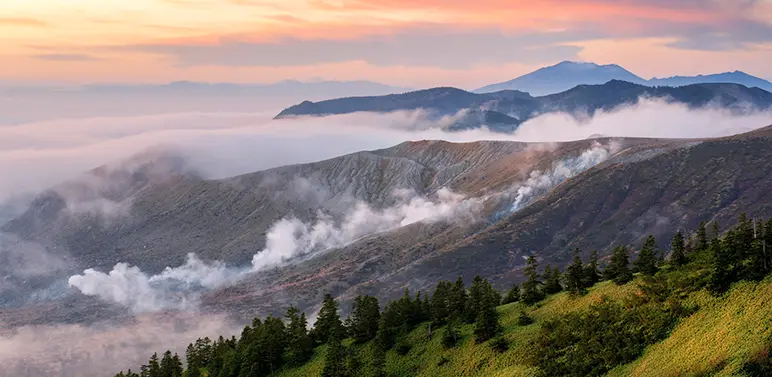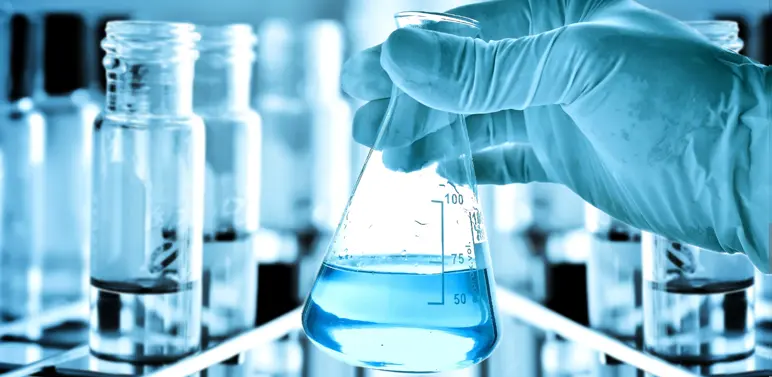Aiming for complete energy self-sufficiency
Geothermal Power Generation

A
unique
comprehensive chemical manufacturer
Bringing the Earth's bounty to people
in Japan—a volcanic country
In Japan, the energy self-sufficiency rate is now only about 10%, as around 90% of the resources needed to meet demand for electric power are imported from abroad. In that context, one energy source expected to be important in the future is geothermal energy, which taps the power of magma deep below the Earth’s surface. It is a sustainable and renewable source of energy that will not eventually run out like fossil fuels. Home to more than 200 volcanos, Japan is a geothermal powerhouse with an abundant source of this domestic energy resource. MGC has been taking on the challenge of developing geothermal power for the past three decades with a view to improve the country’s energy self-sufficiency.
01Applying technologies used for exploring natural gas
MGC took its first step toward developing geothermal power in 1981. Together with Mitsubishi Materials Corporation, it began surveying land in Akita Prefecture, specifically in the Sumikawa area of the city of Kazuno, with the goal of building a geothermal power plant. At that time, MGC already possessed technologies for both exploring and utilizing natural gas, which is a raw material for chemicals, and decided to apply those technologies for the development of geothermal power. Today, MGC is involved in geothermal power plant projects in five locations (including plants at the verification stage), additionally starting geothermal potential survey in several domestic areas.

02Adopting an innovative drilling method to overcome challenging conditions
After launching the exploration project in 1981, MGC successfully commenced operations of the Sumikawa Geothermal Power Plant in 1995. Unknown to many, however, a major hurdle had to be overcome. The source of the geothermal energy was located about 2,400 meters below a national park neighboring the plant, and development projects that would harm the scenery in the park were not allowed. Therefore, in order to minimize the above-ground area of the plant as much as possible, MGC adopted an innovative method: it drilled several steam production wells diagonally from one place on the site of the plant instead of drilling from directly above in the park. Fortunately, this method worked perfectly and the drilling was completed safely. Since it opened, the Sumikawa Geothermal Power Plant has continued to operate safely and stably, generating power at more than 80% of total capacity on average in fiscal 2015 (April 1, 2015 to March 31, 2016), which is considerably higher than the overall average of about 60% for geothermal power plants in Japan.

03Geothermal power not only generates electricity but also makes greater use of the Earth’s bounty for people
In addition to generating electricity, a portion of the high-temperature steam and water produced by geothermal power plants can be used for other purposes and facilities, such as heated swimming pools and spas, local district air-conditioning systems, small-scale power generation, heat for greenhouses and irrigation water, and road snow melting systems. In fact, making greater use of subterranean heat can contribute to alleviating resource depletion and global warming. For that reason, everyone at MGC is committed to developing geothermal power.

Bonus Feature!Over a century since geothermal energy was first used in Japan
Using geothermal energy to generate power may seem like a relatively new concept, but if we look back in history, it has been pursued for many years in the past. In Japan, for example, Masuji Yamanouchi, a navy admiral, successfully dug a well in the early twentieth century in Oita Prefecture after surveying land for the purpose of using subterranean heat as a heat source. His motivation for finding an alternative heat source came from a concern that oil and coal would run out in the future. Over a century later, Japan is confronted with that same issue today, but its technologies for developing geothermal energy have made remarkable advances. Indeed, the time has finally come when switching to this ideal alternative energy source is possible.







